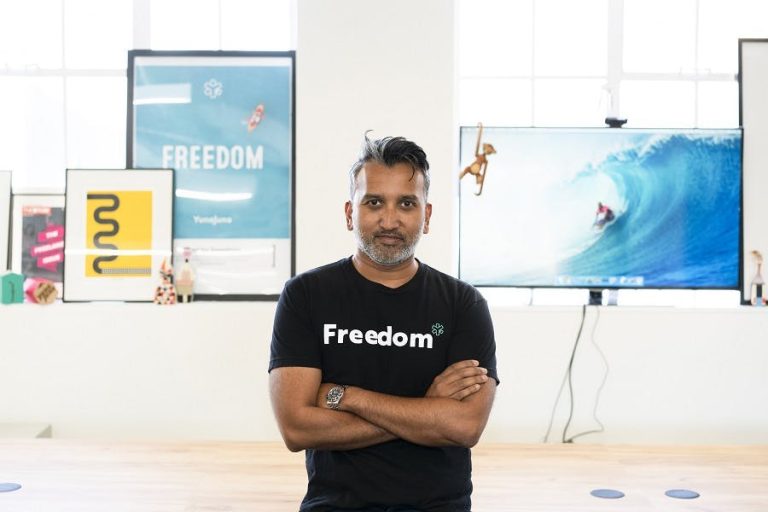As the cost to acquire new consumers is increasing, you need to find new sales channels and new geographies to sell into. As shopper expectations grow, brands that succeed over the next five years will find creative ways to go above and beyond to delight shoppers. Attention can be lost as quickly as a swipe, so it’s more important than ever to provide a personalised purchase and post-purchase experience.
Additionally, we’re offering brands the opportunity to split their inventory across multiple warehouse locations to minimise costs. Initially, this can sound counter-intuitive but delivery zones across the US and the tax charges for selling into Europe from the UK, for example, mean charges can skyrocket quickly. By having your inventory split across multiple fulfilment centres you can meet your customers where they are and drive down last mile delivery costs.

Talk me through your role… what does a typical day look like for you?
There are some great tailwinds that are encouraging an extraordinary number of entrepreneurs to dive head-first and take advantage of the ecommerce surge. There is a huge opportunity for brands brave enough to diversify and take advantage of the growing number of both online and offline sales channels.
The pandemic’s ecommerce surge has meant that the small brands we work with have experienced phenomenal growth and have become more reliant on our business in order to maintain and expand their operations. We want to help entrepreneurs think globally from day one by helping them ship stock around the world to instantly open up new customer markets. We expect to see these growth trends continue as consumer confidence increases and online shopping becomes the norm.
What are the biggest challenges for ecommerce brands today, and how can they overcome them?
We also expect brands to build more resilience into their operations following last year’s supply chain crisis that exposed flaws in a dated and vulnerable global model. Smaller brands are afforded flexibility that the much larger retailers can’t match, by staying agile and utilising local national and international carrier partners, smaller brands will be able to navigate global issues and be better protected should disaster strike.
It’s this optimism and focus on growth that has me so excited about ecommerce over the next decade, and fuels our drive to innovate for the millions of brands and hundreds of millions of consumers that we will support in our lifetime. This is also the catalyst for us putting together our annual report on the state of ecommerce, supply chain, and fulfilment. In this report, we offer insights into supply chain issues like port congestion, and freight and last-mile carrier costs increasing, with all of these potential headaches it’s crucial to have trusted logistics partners to meet consumer demands.
More brands understand they need to meet customers where and how they shop. Our research has shown that 70% of brands are planning on adding new sales channels this year, with 73% already selling on two or more. Each channel offers its own benefits, Shopify for example is a great place to start if you’re a kitchen table start-up to reach consumers looking for a more personalised gift but a behemoth like Amazon gives you access to a global market and consumers you may not know existed.
On the flip side, where do the biggest opportunities lie? Where should brands be investing?
As the market grows, we expect the tools and analytics available to brands to become more sophisticated giving them a deeper insight into their business and customers. On our platform, we give customers a single view of all stock and orders, no matter how many fulfilment centres they use across the world, while our live data enables us to flag routes at risk to give brands the best delivery options and ensure their items will arrive at a customer’s door without delay.
The Ecommerce Quarterly
Our advice for brands is to diversify their sales strategy, test which marketplaces, retailers, social sites and paid advertising works best for your business and customers. With more data brands will have a much clearer idea of where their products sell best, where their customers are and how to sell to them. Brands that do this have a huge opportunity ahead as the surge in ecommerce looks set to continue.
What should small retailers do to scale their business in 2022?
My days are largely spent meeting with clients and onboarding new team members. We’re currently focusing on growing our European HQ headcount in the UK and in order to target the massive number of growing ecommerce brands, we’re dedicating much of our hiring to sales and account management personnel.
I was hired to launch ShipBob in Europe, where we currently have sites in Manchester, Ireland and Poland. We’re well established in the US, but this is a fantastic opportunity to build from the ground up in the UK and expand across Europe.
We use a combination of tech and our warehouse network to give smaller retailers the supply chain capabilities normally found in massive, multinational firms. On the warehouse side, we focus on the rapid roll out of smaller sites, which protects brands from the massive vulnerabilities now facing larger companies as the supply chain crisis rumbles on. On the technology side, our capabilities help us and our customers to track and plan how stock moves around, improving transport times, shipping costs and the delivery experience for their shoppers.
How do you predict the ecommerce industry will evolve in future?
Today is an extremely opportunistic, yet complicated time, to be in ecommerce. Competition is now on a global scale with millions of brands launching each year, and shopper expectations skyrocketing. Despite these challenges, brands are navigating the ever-changing landscape with plans to expand even faster this year.
Our main focus will be on building the company’s UK operations and by the end of 2023, we expect to have grown our network across Europe. Alongside enhancing domestic deliveries, ShipBob will be offering British brands instant access to consumers across the North American market and the ability to ship to US shoppers within a few days. We will also provide brands with peace of mind against supply chain challenges by offering instant access to our network of popular national and international carrier partners to ensure that products can always be delivered to a consumer’s door.
Sustainability will also start to play a bigger role as consumers become increasingly aware of their favourite brands’ environmental footprint and what they’re doing to help the planet. We’re seeing innovation across marketplaces like Zalando that allows customers to search by a brand’s sustainability credentials, which helps brands capture more sustainably-minded customers whose priorities have shifted towards a greener future. The brands that meet these new consumer expectations will be the big winners in the coming years.
While smaller retailers have the ability to make decisions quickly and be agile, when faced with operational or technical challenges they often struggle as they don’t have the expertise or available teams on-hand to make changes quickly enough.
What’s next for Shipbob?
Enda Breslin is General Manager EMEA of ShipBob, a tech-enabled third-party logistics platform that fulfils orders for ecommerce businesses. Launched in 2014, the company gives brands the analytics to track and ship stock globally.
Scaling a business can be daunting and one of the reasons entrepreneurs fail to get off the ground isn’t due to not having the right business idea, it’s about not partnering with the right companies. It’s never been a better time to start an ecommerce business and we want to help brands think globally from the outset. By working with the right partners, entrepreneurs and small businesses can seize the growth opportunity with both hands.
I caught up with Enda to find out more about his role. We also discussed the biggest challenges (and opportunities) for ecommerce brands, as well as the evolution of the ecommerce industry.






